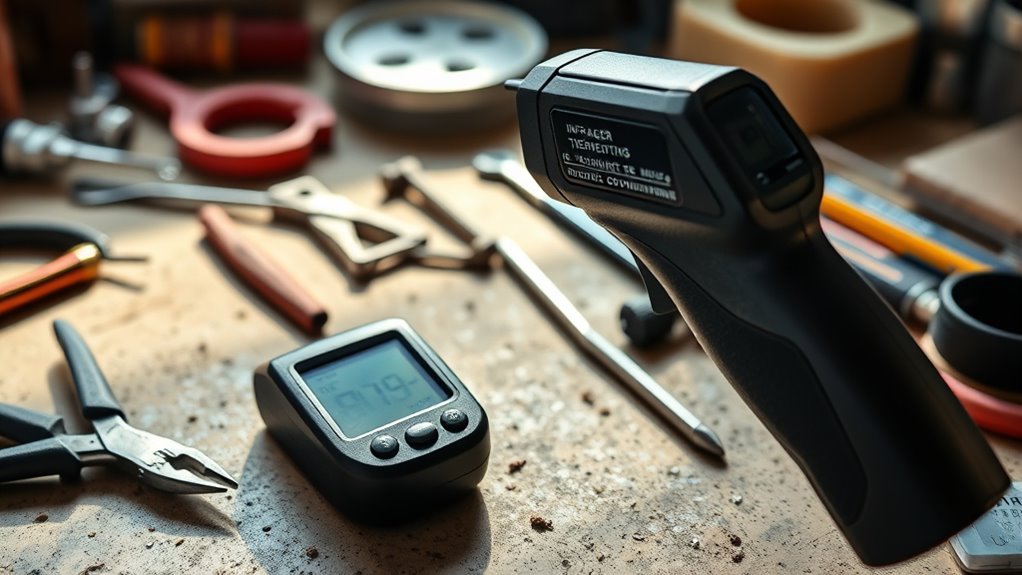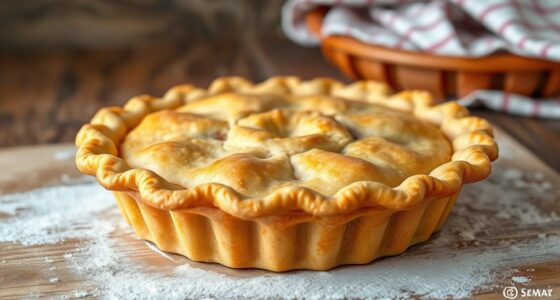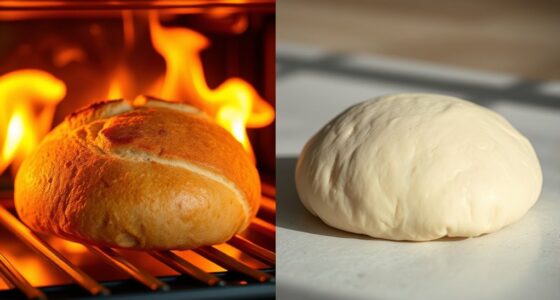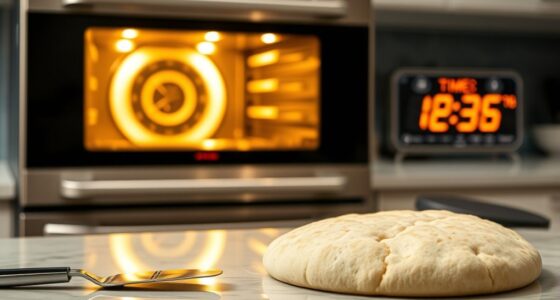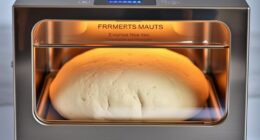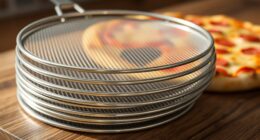To quickly master your IR thermometer in 15 minutes, start by understanding how it detects surface heat and choose the right device for your needs. Prepare surfaces by cleaning them and follow proper measurement techniques, like maintaining the correct distance and angle. Record your results carefully and check the device’s calibration regularly. With these quick steps, you can guarantee accurate readings—continue exploring to discover even more tips for ideal use.
Key Takeaways
- Choose an IR thermometer suited for your measurement range, surface type, and features like laser pointers for quick accuracy.
- Clean surfaces and calibrate the device properly before measuring to ensure reliable and accurate temperature readings.
- Maintain the correct distance and angle, aiming perpendicular to the surface, and avoid environmental interference like sunlight or wind.
- Record and interpret data carefully, tracking changes over time and comparing against safety standards for effective monitoring.
- Store and maintain the device regularly by cleaning the lens, replacing batteries, and calibrating to ensure consistent, long-term performance.
Understanding How Infrared Thermometers Work
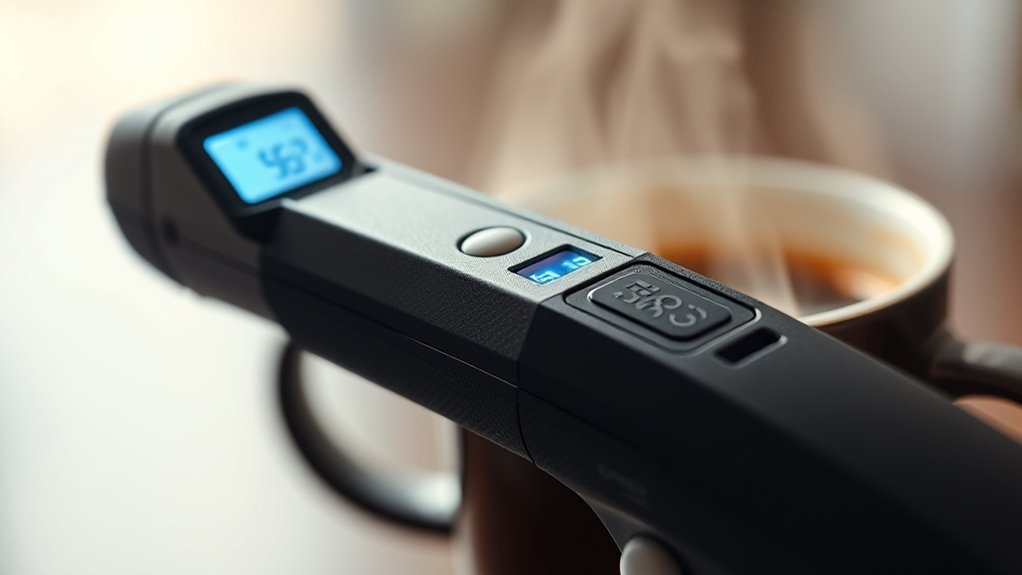
Infrared thermometers work by detecting the heat emitted from an object’s surface without making contact. They focus on the emission wavelength, which is the specific range of thermal radiation an object releases as heat. Every object with a temperature above absolute zero emits thermal radiation, and infrared thermometers capture this radiation to determine temperature. When you point the device at a surface, it senses the infrared energy and converts it into an electrical signal. This process allows you to measure temperature quickly and accurately from a distance. Understanding the emission wavelength is key because it determines how the device detects thermal radiation. By analyzing this radiation, the infrared thermometer provides instant readings, making it an efficient tool for quick temperature assessments without physical contact.
Selecting the Right IR Thermometer for Your Needs

Choosing the right IR thermometer depends on understanding your specific needs and the environment you’ll use it in. First, consider the temperature range you require; some models measure only up to a certain temperature, while others cover a broader span. Make certain the thermometer has proper infrared calibration to guarantee accurate readings over time. Think about the surface types you’ll measure—reflective, matte, or textured—as this affects the device’s suitability. If you need quick, frequent readings, opt for a model with a fast response time. Also, check features like laser pointers for targeting and adjustable emissivity settings for precise measurements. Matching these factors to your tasks ensures you select an IR thermometer that provides reliable, accurate results in your specific application. Additionally, understanding the importance of accurate readings can help ensure you choose a device that truly meets your needs.
Properly Preparing Your Surface or Object for Measurement
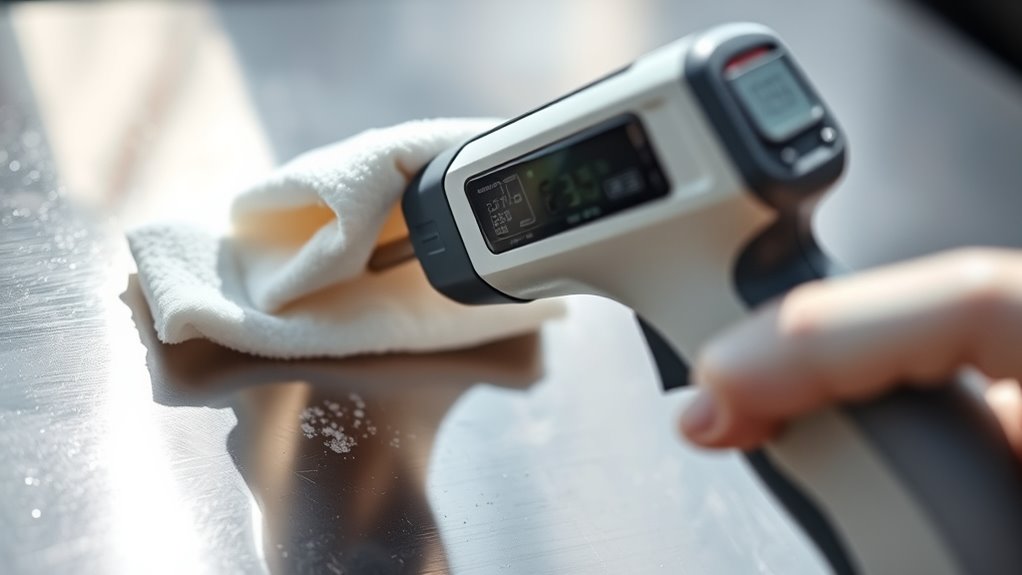
Before taking a measurement, make sure the surface is clean to get accurate readings. Check that the object is stable and not moving, so your results stay consistent. Proper preparation helps you avoid errors and guarantees reliable temperature measurements. Additionally, ensure that the measurement area is free of spoilage signs or contaminants to improve accuracy.
Clean the Surface
To get accurate temperature readings with your IR thermometer, it’s essential to start by cleaning the surface of the object you’re measuring. Follow proper cleaning protocols to ensure the surface is free of dust, dirt, or grease that can skew results. Surface residue removal is vital because contaminants can create insulation layers or reflect infrared radiation, leading to inaccurate readings. Use a clean, lint-free cloth and an appropriate cleaner for the material to wipe down the surface thoroughly. Avoid harsh chemicals that might leave residues or cause surface damage. Wait until the surface is dry and free of any cleaning agents before measuring. Proper cleaning ensures your IR thermometer provides precise and reliable temperature data. Additionally, understanding the surface properties of the material can help you interpret your readings more accurately.
Ensure Surface Stability
Ensuring the surface or object is stable and properly prepared is crucial for accurate IR thermometer readings. Any surface deformation, like warping or unevenness, can cause inconsistent measurements. Before taking a reading, check that the surface is flat and secure, preventing movement during the process. Environmental influences such as wind, direct sunlight, or drafts can also affect results, so shield the object from these factors whenever possible. Avoid measuring on surfaces that are unstable or vibrating, as movement can lead to inaccurate readings. Additionally, material consistency of the surface can impact temperature readings and should be considered during measurement. By stabilizing the surface and minimizing environmental influences, you improve measurement precision. Proper preparation reduces errors caused by surface deformation or external conditions, ensuring your IR thermometer provides reliable, consistent temperature readings.
Mastering the Correct Technique for Accurate Readings

Achieving accurate temperature readings with an IR thermometer depends on mastering the correct technique. First, ensure your device is properly calibrated using recommended calibration techniques, which may involve comparing readings with a known standard. Always follow safety precautions, such as avoiding direct eye exposure to the laser pointer and keeping the thermometer away from extreme heat or moisture. When taking a measurement, hold the device steadily, maintain the correct distance from the target, and aim the laser accurately at the surface. Keep the thermometer perpendicular to the surface to avoid skewed results. Avoid pressing too hard or moving during measurement. Consistently applying these techniques guarantees reliable, precise readings and helps you get the most accurate data from your IR thermometer. Additionally, understanding pinball machine technology can enhance your appreciation of how precise control and calibration improve overall performance.
Interpreting and Recording Temperature Data Effectively
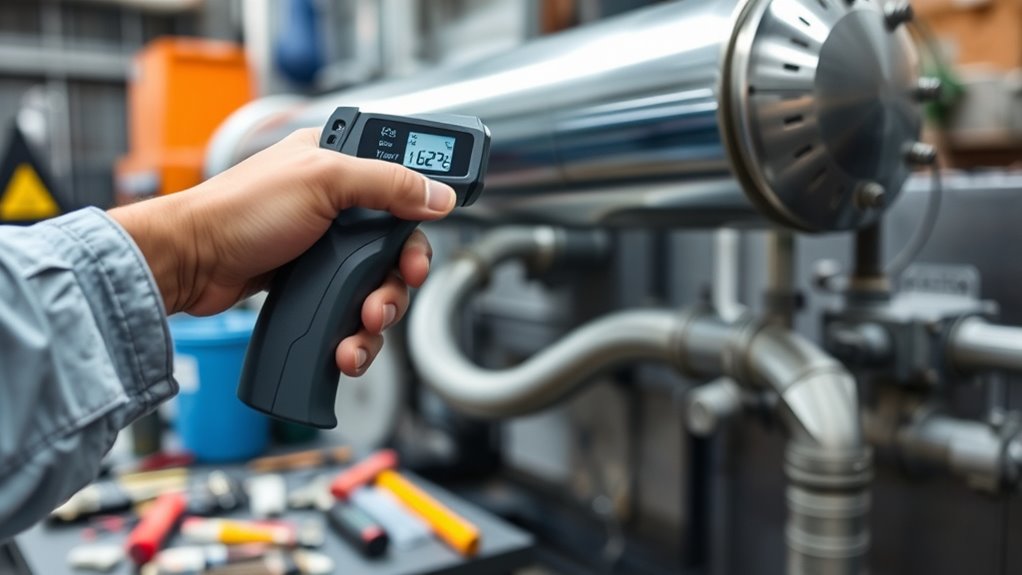
Interpreting and recording temperature data accurately is essential for making informed decisions and maintaining safety. You should focus on clear data visualization to easily identify patterns or anomalies in temperature readings. Use graphs or charts to track changes over time, which helps you spot trends quickly. Record keeping is equally important; document each reading with details like date, time, and location to guarantee data is reliable and traceable. Consistent recording practices prevent errors and provide a solid reference for future assessments. When interpreting data, compare readings against standard thresholds or safety limits to determine if action is needed. Additionally, understanding air quality factors can help you better assess the significance of temperature variations in your environment. By combining effective data visualization with meticulous record keeping, you’ll enhance your ability to respond promptly and maintain a safe environment.
Troubleshooting Common Issues and Ensuring Accuracy
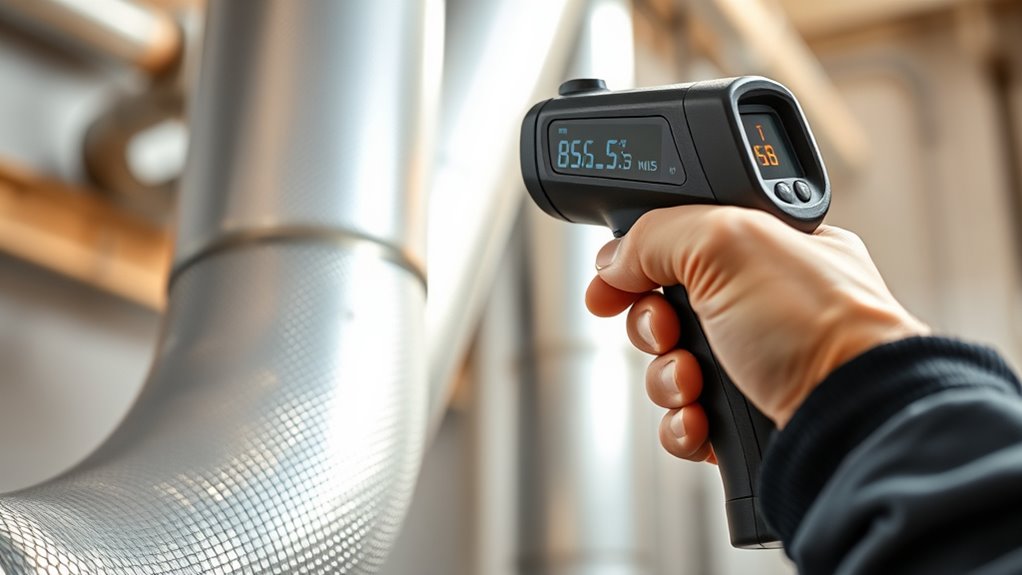
Troubleshooting common issues with IR thermometers requires you to identify and resolve problems quickly to maintain accurate readings. Start by checking for calibration tips; regularly calibrate your device to ensure it provides precise measurements. Common malfunctions include inconsistent readings, a frozen display, or failure to turn on. If readings fluctuate, clean the lens and verify the device is properly calibrated. For malfunctions, inspect the battery and replace it if needed, as low power can cause inaccuracies. If problems persist, consult the manufacturer’s troubleshooting guide or consider professional calibration. Addressing these issues promptly prevents unreliable data and prolongs your thermometer’s lifespan. Staying proactive with calibration and maintenance helps keep your IR thermometer functioning accurately and reliably. Additionally, understanding lifestyle factors that can influence device performance, such as temperature fluctuations, can help in maintaining consistent results.
Maintaining and Caring for Your IR Thermometer
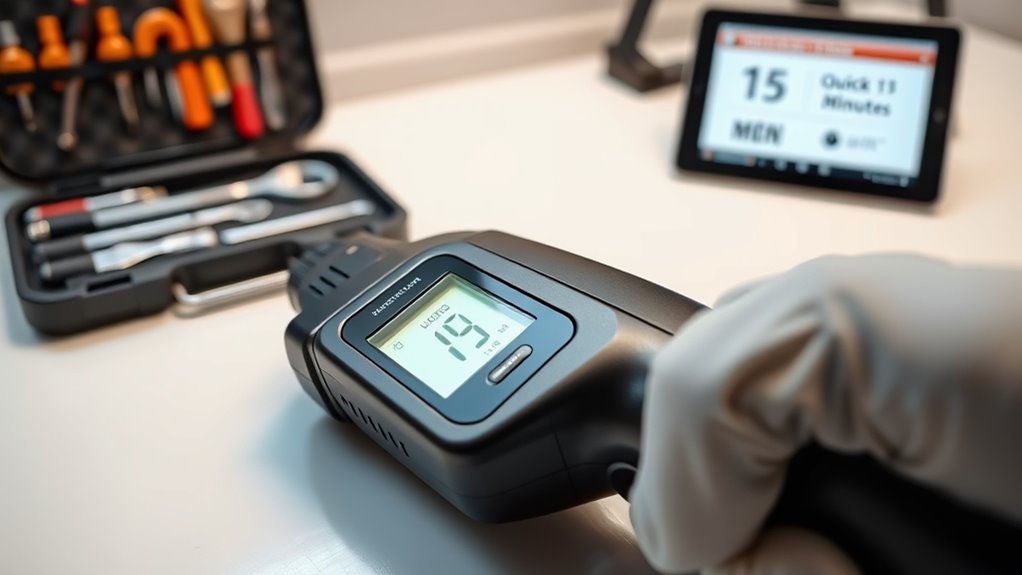
Proper maintenance and care are key to guaranteeing your IR thermometer stays accurate and lasts longer. Regularly check that your device meets calibration standards; this assures reliable temperature readings. If your thermometer has an adjustable calibration feature, verify it periodically with a known temperature source. Battery maintenance is also essential—replace batteries promptly to prevent power issues that could affect accuracy. Keep the battery contacts clean and dry to avoid corrosion. Store your thermometer in a protective case and avoid extreme temperatures or direct sunlight. Clean the lens gently with a soft cloth to maintain clear measurements. Additionally, for optimal performance, consider Kia Tuning options to ensure your vehicle’s systems are functioning correctly, which can also benefit from precise temperature measurements. By following these steps, you’ll assure your IR thermometer remains precise and ready whenever you need it. Proper care extends its lifespan and preserves measurement accuracy.
Frequently Asked Questions
Can IR Thermometers Measure Through Transparent Materials Like Glass?
You can’t rely on IR thermometers to measure through transparent materials like glass because of glass transparency and infrared penetration issues. IR thermometers detect surface temperatures by sensing infrared radiation, but glass often blocks or distorts this radiation, preventing accurate readings. For precise measurements through glass, you need specialized equipment designed for infrared penetration, or you should measure the surface directly on either side of the glass instead of trying to see through it.
How Does Ambient Temperature Affect IR Thermometer Accuracy?
Imagine your IR thermometer battling a blazing sun or freezing winter—ambient temperature dramatically impacts accuracy. You need to rely on ambient calibration and temperature compensation to fight these extremes. When you use these features, your device adjusts for surrounding temperature shifts, ensuring precise readings. Without this, your measurements could be wildly off, like trying to hit a target in a hurricane. Always account for ambient conditions to keep your readings spot-on.
Are IR Thermometers Safe for Measuring Human Body Temperature?
Yes, IR thermometers are safe for measuring human body temperature when used properly. Infrared safety guarantees you won’t be exposed to harmful radiation, making it a non-contact, hygienic method. To maintain measurement accuracy, keep the device clean and calibrated, and follow the manufacturer’s instructions. Proper usage minimizes errors and ensures reliable readings, giving you peace of mind while quickly evaluating body temperature without discomfort or risk.
What Is the Typical Lifespan of an IR Thermometer Battery?
Your IR thermometer’s battery life usually ranges from 1 to 2 years, depending on usage. To maximize lifespan, turn off the device when not in use and avoid leaving batteries in for extended periods. For replacement tips, use high-quality batteries, check compatibility, and follow the manufacturer’s instructions carefully. Regularly inspect the battery compartment for corrosion, and replace batteries promptly to guarantee accurate readings and device longevity.
Can IR Thermometers Detect Temperature Differences in Moving Objects?
Yes, IR thermometers can detect temperature differences in moving objects, but accuracy depends on thermal contrast and emissivity adjustment. When measuring moving targets, make certain there’s sufficient thermal contrast between the object and background. Adjust emissivity settings properly to match the material, as this improves measurement precision. Keep the thermometer steady and aim accurately for reliable readings, especially when the object’s motion might cause fluctuations in the detected temperature.
Conclusion
Now that you know the ins and outs of using an IR thermometer, you’re all set to get quick, accurate readings like a modern-day Sherlock Holmes. Just remember, proper technique and regular maintenance are your keys to success. Don’t let the digital age fool you—sometimes, mastering simple tools is the secret to staying ahead. With these tips, you’ll be a pro in no time, making your measurements as effortless as a flick of the wrist in the 21st century.
